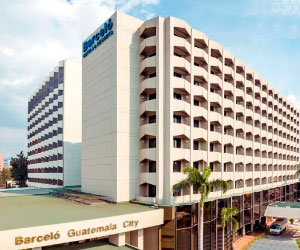In a recent review published in Nutrients, researchers explore the role of herbs and spices as adjuvant methods to treat rheumatic disease (RD) and improve patients’ disease status.
Background
Despite advancements in the pharmacological treatment of RD in recent years, most patients do not achieve complete remission with currently available treatments. As a result, patients often seek adjuvant therapy, including dietary interventions, to improve their quality of life.
Herbs and spices serve a prominent role in nutritional habits and medicinal purposes. Thus there is growing interest in dietary intervention with herbs and spices in the management of immune-mediated diseases, including RDs.
Most herbs and spices are abundant sources of vitamins, alkaloids, antioxidants, and their remarkable anti-inflammatory and anticarcinogenic properties. The current study discusses widely used spices/herbs in RDs, including cinnamon, garlic, saffron, ginger, and turmeric. In addition, the study findings provide important insights into gut microbiota and the effect of herbs and spices on rheumatoid arthritis (RA), fibromyalgia (FM), and osteoarthritis.
Gut microbiota, diet, and RDs
The progression of RDs is dependent on a combination of genetic, environmental, hormonal, and lifestyle factors. Inflammation and tissue damage are commonly observed due to the infiltration of leukocytes and proinflammatory cytokines released in affected organs.
Several studies suggest that the development of RDs like RA is due to a multifactorial pathophysiological mechanism. RA is an autoimmune and inflammatory disease characterized by autoantibodies, which are collectively described as the rheumatoid factor (RF).
Previous research shows that an imbalance in gut microbiota caused by chronic inflammation can induce RA disease progression. Numerous findings advocate that Mediterranean, vegetarian, and vegan diets help reduce pain in RA patients as compared to other diets.
In osteoarthritis (OA), tumor necrosis factor (TNF) and interleukin1β (IL-1β) promote erosion of the articular cartilage matrix. The gut microbiota also appears to be involved in the modulation of inflammation-mediated diseases like OA.
Immunology eBook Compilation of the top interviews, articles, and news in the last year. Download the latest edition
FM is a chronic condition associated with extensive pain due to inflammation, which is accompanied by high IL-6 and IL-8 levels and altered gut microbiota. Like RA and OA patients, vegetarian and vegan diets appear to ameliorate the quality of life in FM patients by reducing pain and improving sleep.
Bioactive properties of herbs and spices
Cinnamon, garlic, curcumin, saffron, and ginger have been extensively studied for their potential use to treat inflammation in many chronic diseases, including RDs.
Cinnamon contains bioactive compounds that induce the inhibition of lipopolysaccharide (LPS)-induced nuclear factor kappa-light-chain-enhancer of activated B-cells (NF-kB), which is a transcription factor for regulating gene expression of proinflammatory genes.
Curcumin, an active turmeric compound, affects arachidonic acid metabolism and behaves similarly to non-steroidal anti-inflammatory drugs (NSAIDs). In RA patients, curcumin exhibits significant anti-inflammatory effects and reduces disease activity.
Garlic and its derivatives have been widely studied both in vitro and in vivo to evaluate its immunomodulatory and anti-inflammatory properties. Randomized controlled trials (RCTs) have also shown that garlic supplementation decreases C-reactive protein (CRP), IL-6, and TNF-α levels.
Ginger has a complex chemical composition and appears to protect against intestinal inflammation by inhibiting TNF-α-induced barrier disturbance. Ginger extract has also been found to reduce inflammation by decreasing the production of nitric oxide and prostaglandin E2 in a rat arthritis model.
Saffron and its compounds, including safranal, crocetin, and crocin, can improve disease status in RD patients by modifying inflammation, stress, pain, and antioxidant levels. However, similar to the other spices, the action of saffron was not significant enough for clinical recommendation.
Notably, the bioactive properties of these spices and herbs depend on their storage and cooking methods.
One study investigated the effect of five-gram capsules containing cinnamon, oregano, ginger, black pepper, and cayenne pepper on the gut microbiota of humans. When consumed as mixed spices, these capsules have a probiotic effect and restore gut microbiota.
In another study, the authors found that 500 mg of cinnamon significantly reduces disease activity, as demonstrated by reduced serum CRP and TNF-α, thus benefitting RA patients.
However, the RCTs conducted to date have a high risk of bias. As a result, more data and research are required to establish the health benefits of these herbs and spices.
Conclusions
The current study reviews the possible benefits of using herbs and spices as complementary adjuvant treatment methods for RDs, including RA, OA, and FM. Herein, the researchers highlight the antioxidant, antitumorigenic, anticarcinogenic, and anti-inflammatory properties of herbs and spices while also summarizing available studies investigating the effects of herbs and spices in humans with these conditions.
However, these data are insufficient for therapeutic recommendations for herbs and spices. More studies need to be conducted on supplementation and culinary use of bioactive components present in herbs and spices.
Moreover, a comparative analysis is needed between defined baseline disease activities and available pharmacological treatment with the specific herb/spice being used. This will ultimately provide insights into how to use herbs or spices or mix both in RD treatment for better disease management.
Source: News Medical Life Science.


































